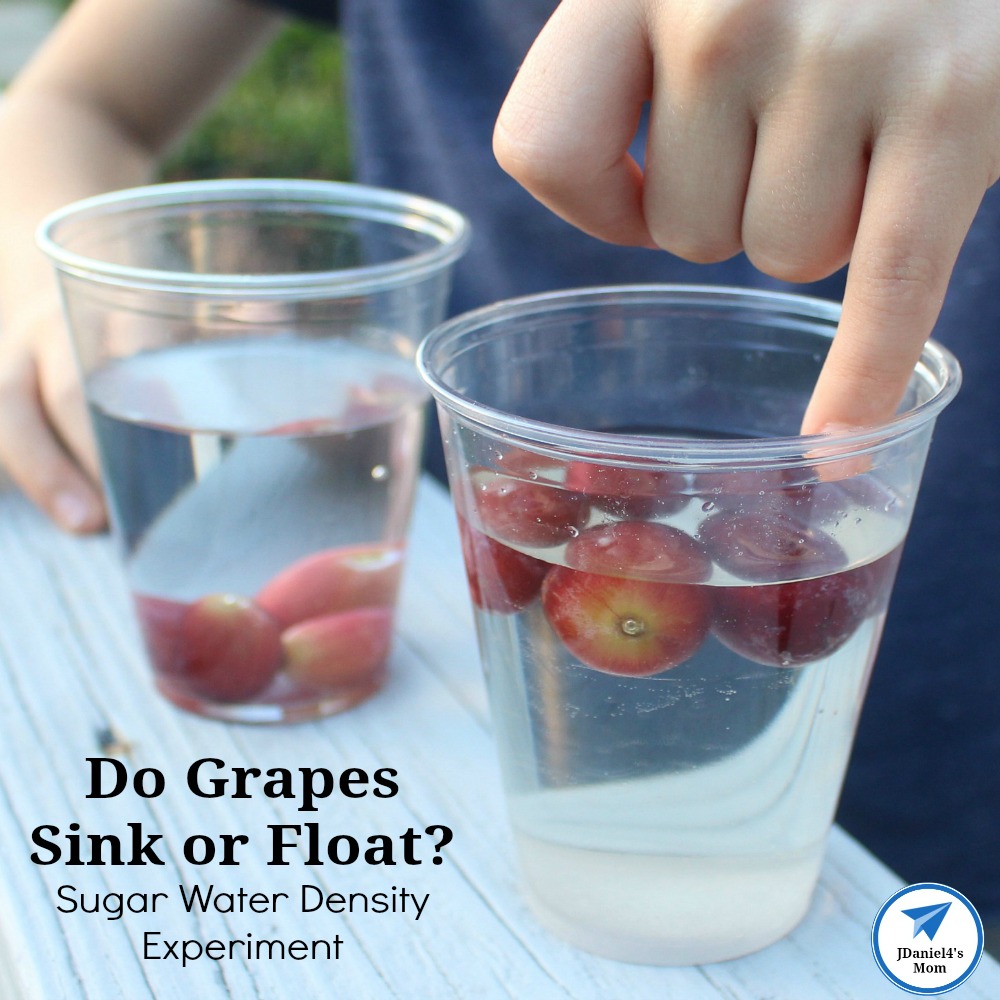
This is the first in a series of three sink and float experiments that feature fruit. Today’s experiment invites children to explore a density experiment that focuses on sugar water. Your children will have fun discovering just how much sugar they will need to add to the water. Without sugar in the water, your children will discover that grapes sink.
Why do grapes sink?
Grapes are denser or heavier than water. They also displace less weight in the water than they weigh.

Why do grapes float in sugar water?
When you add a lot of sugar to the water, the water becomes heavier or denser than the grapes.
Conducting the Density Experiment
Supplies
- Grapes
- Plastic Cups
- Enough Water to Fill the Cups
- 8 Tablespoons of Sugar
- A Spoon
- A plastic tablespoon

Density Experiment Directions
- You will need to place water in both of your plastic cups.
- Your children will need to drop a few grapes in the cup that just contains water. They can try dropping them from various heights if you like. Each time they drop a grape into the water cup it will sink to the bottom of the cup.
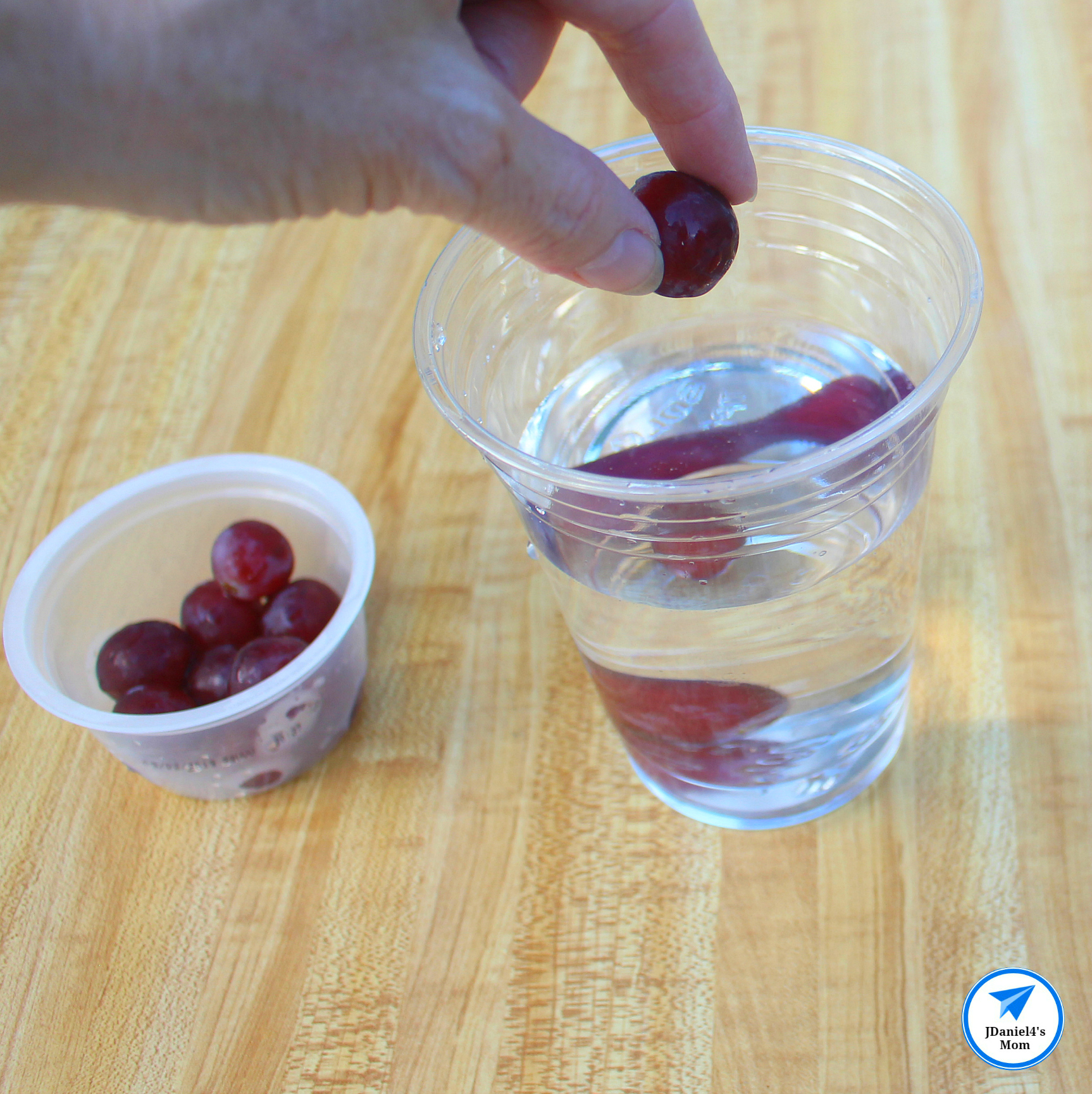
- Your children will need to decide how many tablespoons to place in the second cup of water. Then they will need to drop a grape or two into that cup. If the grape sinks to the bottom, have them add a few more tablespoons of sugar to the cup. ( We had to add 8 tablespoons to the water before the grapes starting to float.)
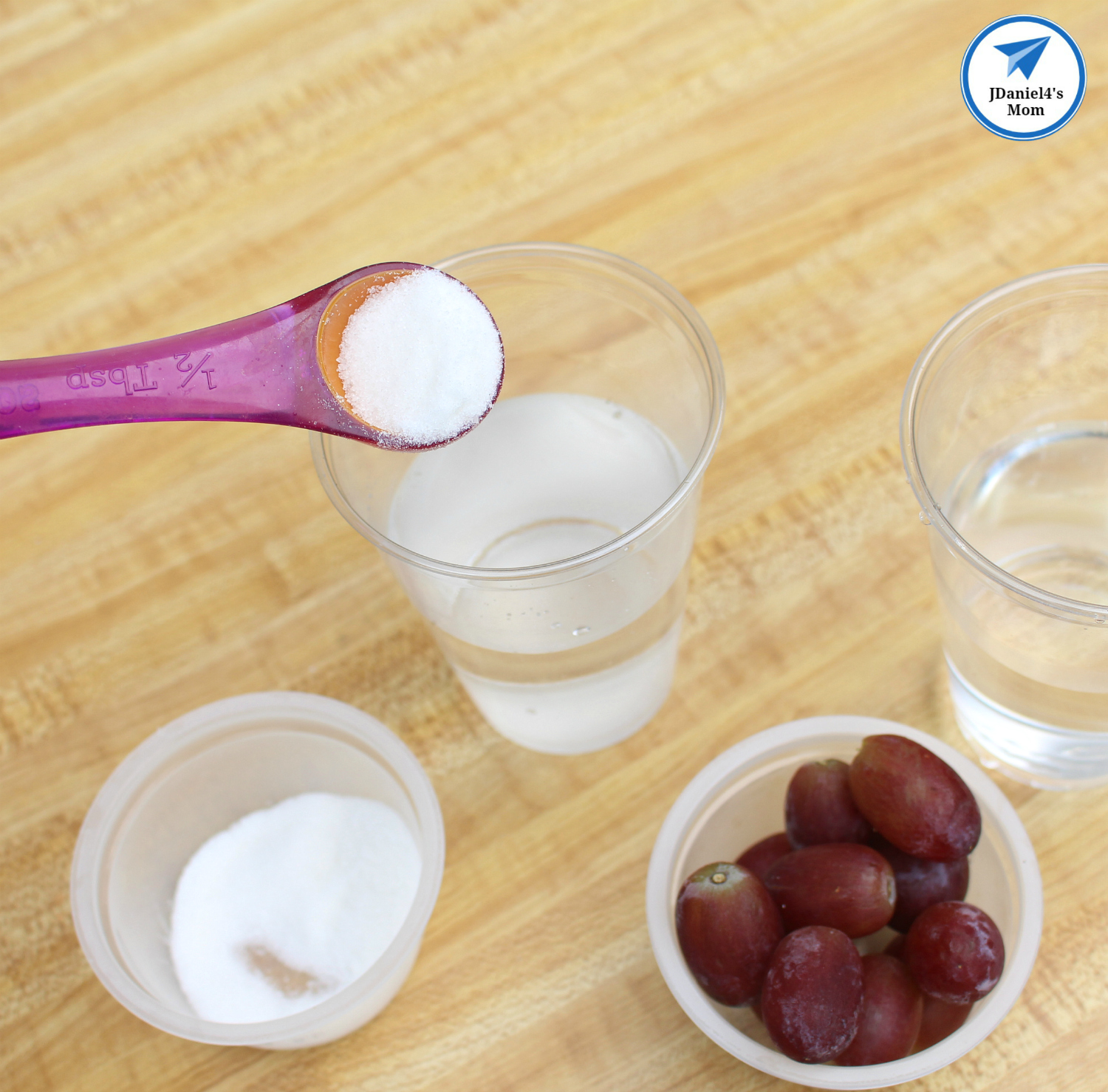
Hint: You may want to have your children take out any grapes they have dropped into the cup before they stir in the additional sugar.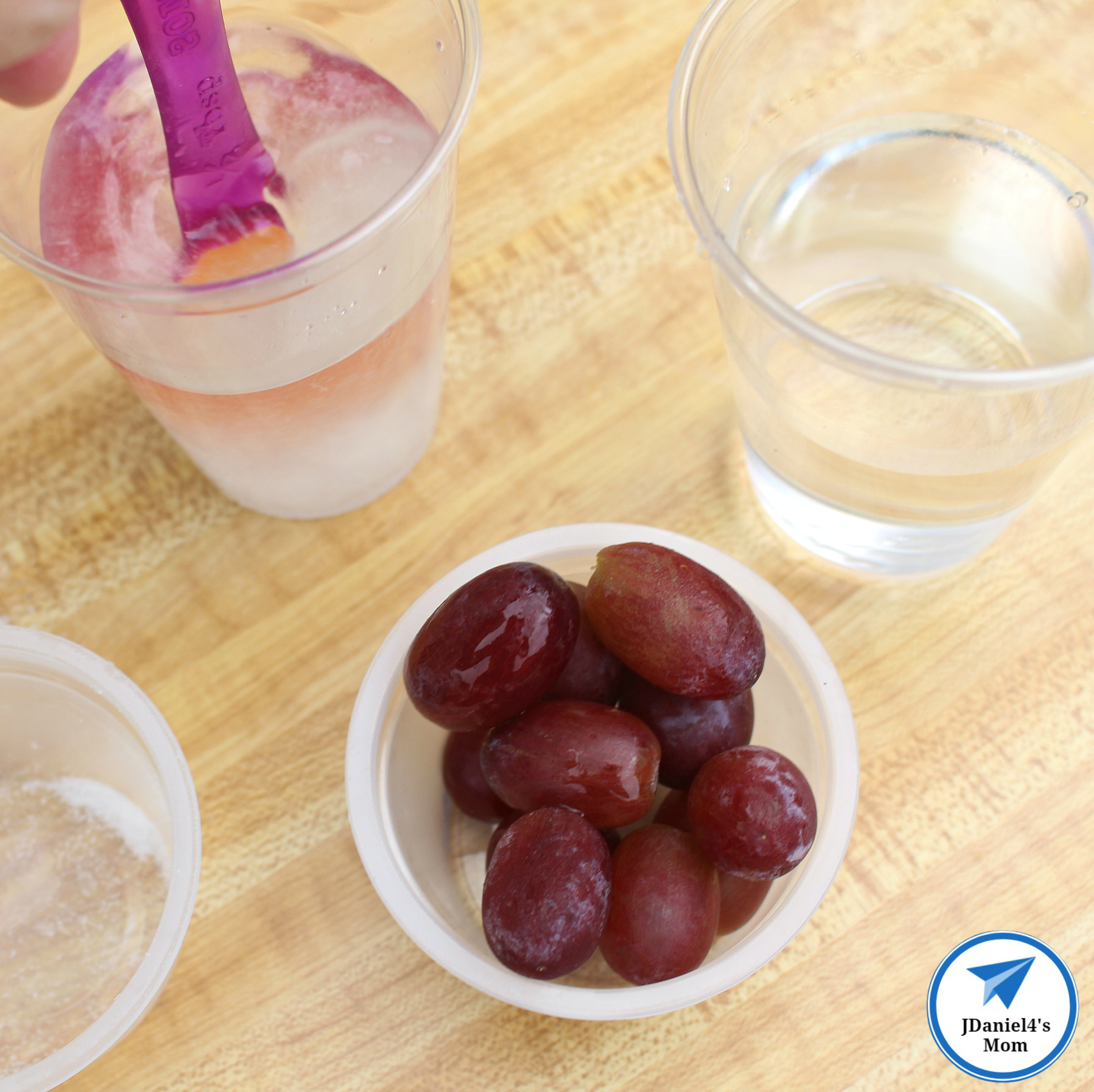
- Finally, have your children try to push the grapes down into the sugar water. They will be amazed and thrilled to watch the grapes pop back up to the top.
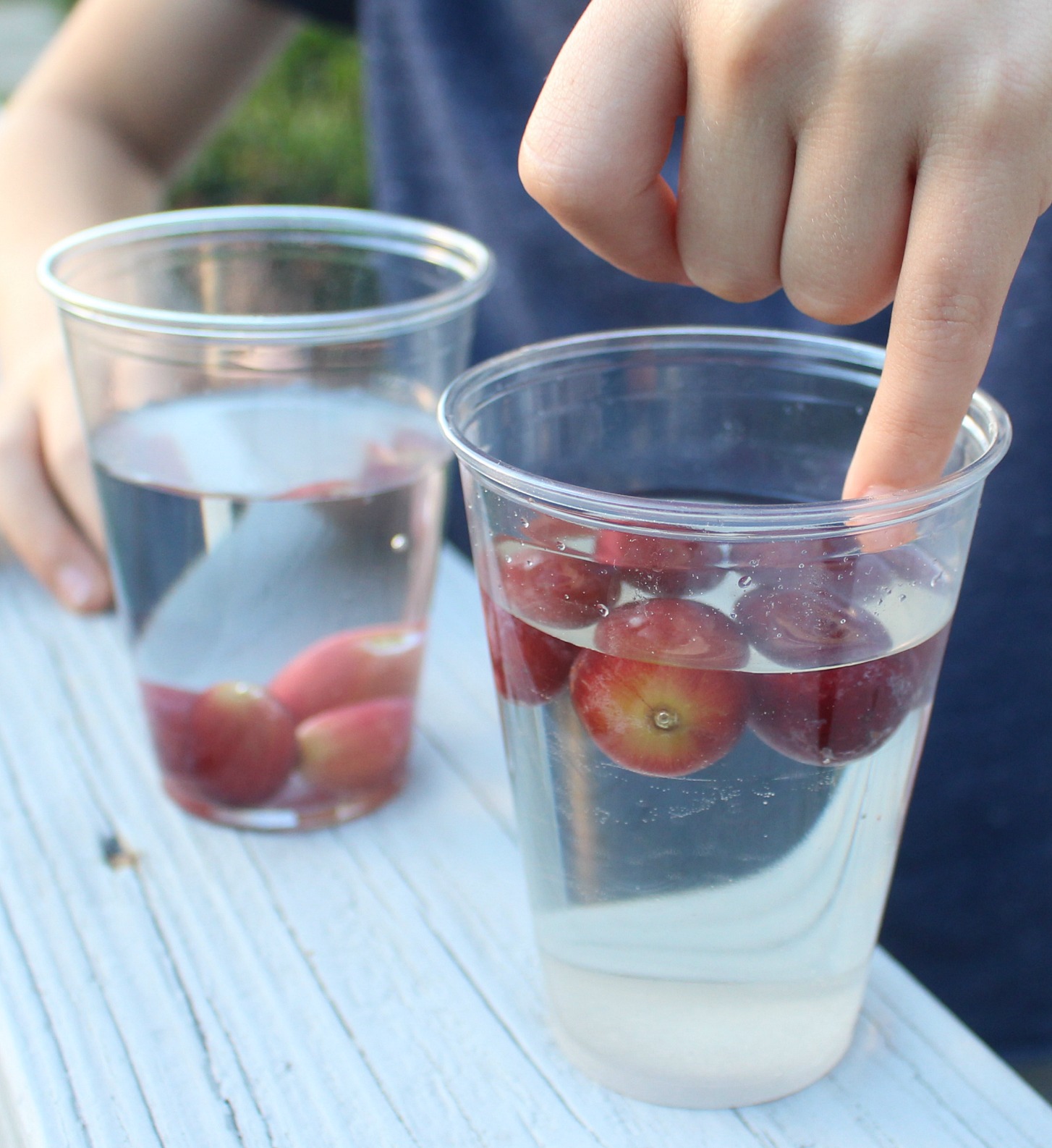
If you like this science experiment, here are some more you will love.
How to Make a Boat with Recycled Materials
STEM Activities-How to Make a Balloon Boat
How Long will a LEGO Boat Float?









Love this. Thanks for sharing.
It is so cool to watch the grapes floating. We kept the glass out for a few days. It was so cool to watch.